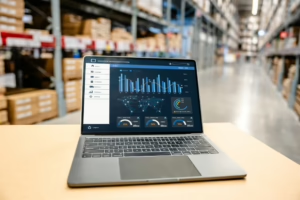
Best Practices for Boosting Sales Margins.
Now is the time for mixed-mode and hybrid manufacturers and distributors to gain clarity on their true cost to serve. With margins under pressure and resources stretched, the ability to identify and prioritize Core customers–while at the same time reducing investment in service-drain relationships–is no longer optional. Those who understand where and how their cost to serve analysis exceeds profitability will be armed with the intel for implementing targeted strategies that shift customers closer to Core, or stop overserving accounts that won’t yield a return.
In a past survey, we confirmed what many in the industry already sensed—distributors are spending too much time on customers who hurt their bottom line. Nearly all respondents acknowledged that they needed to spend less time with poor and service drain customers. But, without robust and accurate cost to serve analysis for each customer, companies risk squandering their limited sales and support capacity on the wrong accounts.
What is Cost to Serve Analysis?
Cost to serve analysis is a powerful enabler for SMB manufacturers and distributors to calculate the real cost of servicing individual customers, from sales visits and support hours to order processing and delivery logistics. By comparing these service costs against the revenue and margin each customer generates, companies can clearly see which accounts are profitable, which are Marginal, and which may be draining resources. This analysis empowers teams to make smarter decisions about where to invest time, how to adjust service levels, and which customer behaviors can be changed to improve profitability.

Real World Application of Cost to Serve Analysis
One of the survey respondents, Mark Bray, Operations Manager of ACR Supply, North Carolina’s leading HVAC and Refrigeration wholesale distributor, talked about the challenge facing not just his company–but so many–accurately identifying the least and most profitable customers. There was a time when ACR Supply had no practical way of sorting their customer list in a way that would help them determine how much time and energy they should devote to each.
To gain control over this critical issue, ACR Supply implemented E&A’s ProSales, a Customer Stratification analytical tool, to leverage data from its ERP system. ProSales evaluates key factors including Buying Power, Loyalty, Margins, and offers a Cost to Serve analysis to then calculate the profitability of individual customers. ProSales empowered the company to change its ‘Marginal’ or profit-draining customer’s behaviors for the better. “Our strategy with Marginal customers is to drive them to our eStore where we can reduce our Cost to Serve,” explained Mark.
ACR Supply’s sales resources have been tasked with educating customers about the advantages of using the company’s eStore. “When visiting onsite, our sales representatives step customers through the setup process: creating logins, setting up lists of frequently purchased items, pickup and delivery options, and so on,” said Mark. “We’ve also tasked our inside salespeople to contact Marginal customers and educate them about the eStore. We’ve found that many customers like using the eStore where they have the convenience of ordering from us whenever they want to,” continued Mark.
Online self-service has lessened the burden on ACR Supply’s inside and outside sales/support staff. ACR Supply has successfully engaged its Marginal customers in a more productive and cost-effective manner than before. Spending less time with poor customers has meant that ACR Supply’s highly-skilled outside and inside salespeople can spend more time supporting their most profitable, ‘Core’ customers.
“Now that our customers can self-service by entering orders online, our outside salespeople have reclaimed the time they used to spend punching in customer orders. This allows our salespeople to allocate more time visiting high-value accounts. It is important for us to deepen our relationships with the Core customers who contribute the most to our profitability,” said Mark. “Additionally, our sales counter people can be more attentive to the foot traffic in our stores because there are fewer inbound phone calls. The more that customers order from us online, the more resources it frees up.”
ACR Supply’s experience proves that distributors who know how to leverage technology can turn poor customers into good customers. With robust Cost to Serve analysis “marginal customers can become profitable customers,” declared Mark. “The key is to know who they are. Then you can take the necessary actions to change these customer’s behaviors for the better.”







